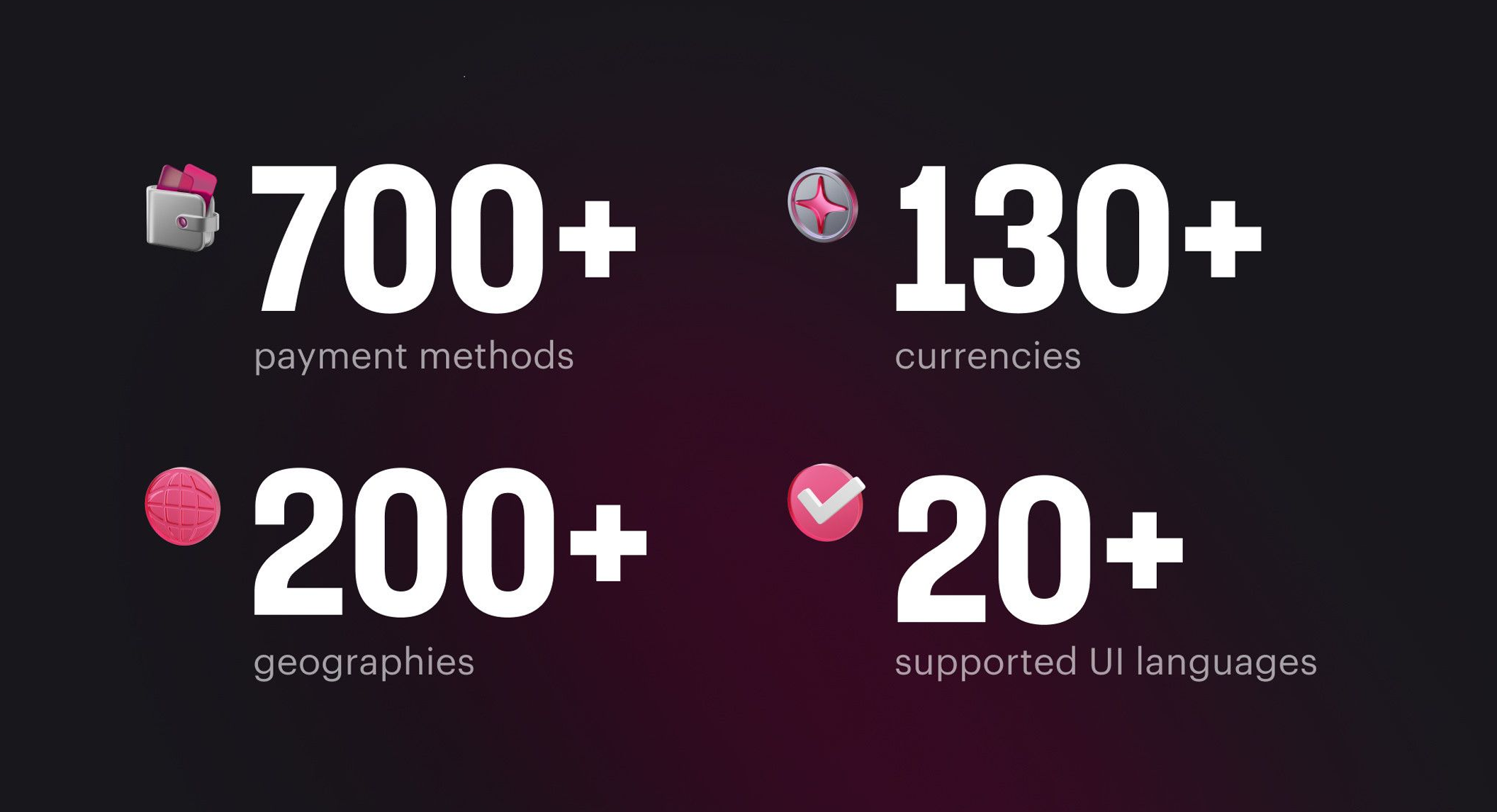Localization
Pricing
Revenue
Boost sales with localized pricing
September 20, 2024•6 min
A great shopping experience begins when sellers communicate with customers in their native language. This demonstrates that the seller understands and cares about the customer's needs and preferences. Then, by presenting prices in the customer's local currency, sellers can make the buying process even more convenient, typically leading to a 12% increase in sales.
In this blog post, we reveal how Xsolla Payments solution goes beyond the basics to:
 Talk to one of Xsolla’s monetization experts or set up an Xsolla Publisher Account to see our approach to localization in action and get more details on localizing your game and reaching new customers worldwide.
Talk to one of Xsolla’s monetization experts or set up an Xsolla Publisher Account to see our approach to localization in action and get more details on localizing your game and reaching new customers worldwide.
- Automatically convert prices during checkout into 130+ currencies
- Represent local taxes and regulations
- Customize the payment interface to the consumer’s language
- Display relevant, local payment methods for each individual game lover
What is transactional localization?
When a game developer expands their game to an international audience, they take on a number of new business considerations, including how to attract new customers in foreign markets. A corrily survey suggests that more than 90% of respondents prefer to see prices in their local currency. When a developer takes on the task of localizing pricing, they give careful attention to:- Pricing. Adapting to local currency and preferred payment methods.
- Consumer buying patterns. Understanding the purchasing behaviors of individuals in every region.
- Language. Incorporating local languages into the checkout experience.
- And beyond. Addressing other country-specific requirements, each unique to the target market.
2 pillars of game ecommerce localization
Currency conversion: Every country is unique Efforts to localize currency ensure that customers spend more time shopping than manually calculating a final, total price in the local currency. For a game developer, there are two approaches to choose for currency localization:- Global pricing. To expand your game’s reach immediately, you should tailor pricing specifically to local markets by converting prices into different currencies; e.g., USD to EUR, USD to JPY, USD to PLN, and more. Automatic price conversion based on locale can ensure a 9% month-over-month growth rate. The Xsolla case study showcases this: after launching the local currency BRL in Brazil, sales increased by 30%.
- Local pricing. Another approach to connecting with global consumers is to adapt pricing based on local market conditions and customer behaviors. This strategy ensures that prices are adjusted to align with different regions' purchasing power and economic conditions, making the product more accessible and attractive to local customers. For example, an item or subscription plan that costs $99 in the US may cost 1,000฿ in Thailand.
Top localized pricing benefits
1. Cart abandonment rate decrease According to a survey of 500 business leaders in the UK and North America, when payment experiences were localized for APAC buyers, cart abandonment rates were reduced by 32%. A 2023 survey published on Statista also found that 11% of consumers in Europe will cancel an online purchase if they are not able to pay in local currency. These statistics are significant, making it clear that local pricing optimization is very important for closing sales and improving conversion rates. Sales grow by making offerings resonate more with customers in specific markets: the more regions you adapt your prices for, the faster you grow. 2. Increased loyalty Aligning your product with the interests of your buyers’ personalities and habits fosters loyalty and trust, and enhances customer satisfaction. They feel cared for because you adapt the experience to their needs, wants, and emotions.Getting started
In-house localization can be a daunting task for game developers. Adapting a game to different cultures and languages involves numerous complexities that can quickly become overwhelming. Attempting to fully localize every aspect of a game for every market can be prohibitively expensive and time-consuming. A more practical approach is to find a partner with game commerce localization experience. Not just a payment provider, but a Merchant of Record with the most comprehensive payments solution and the power to manage payment localizations fully —freeing you to focus on what you do best: Make great games. Xsolla Payments is the solution that allows you to monetize your game by providing your customers with localized, convenient UI to pay for web and in-game purchases:- 700+ payment methods in 200+ geographies, including bank cards, digital wallets, BNPL, instant payments, mobile payments, cash kiosks, gift cards, and many more
- 130+ currencies
- UI localized in 20+ languages
 Talk to one of Xsolla’s monetization experts or set up an Xsolla Publisher Account to see our approach to localization in action and get more details on localizing your game and reaching new customers worldwide.
Talk to one of Xsolla’s monetization experts or set up an Xsolla Publisher Account to see our approach to localization in action and get more details on localizing your game and reaching new customers worldwide.Featured articles
Explore our
latest articles
Contact us
Talk to an expert
Ready to maximize revenue opportunities? Reach out to our experts and learn how to start earning more and spending less.
